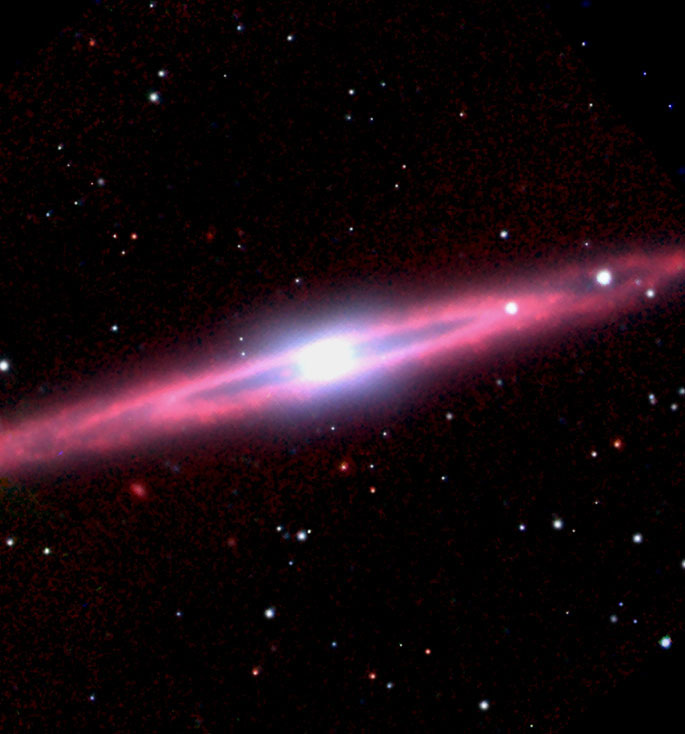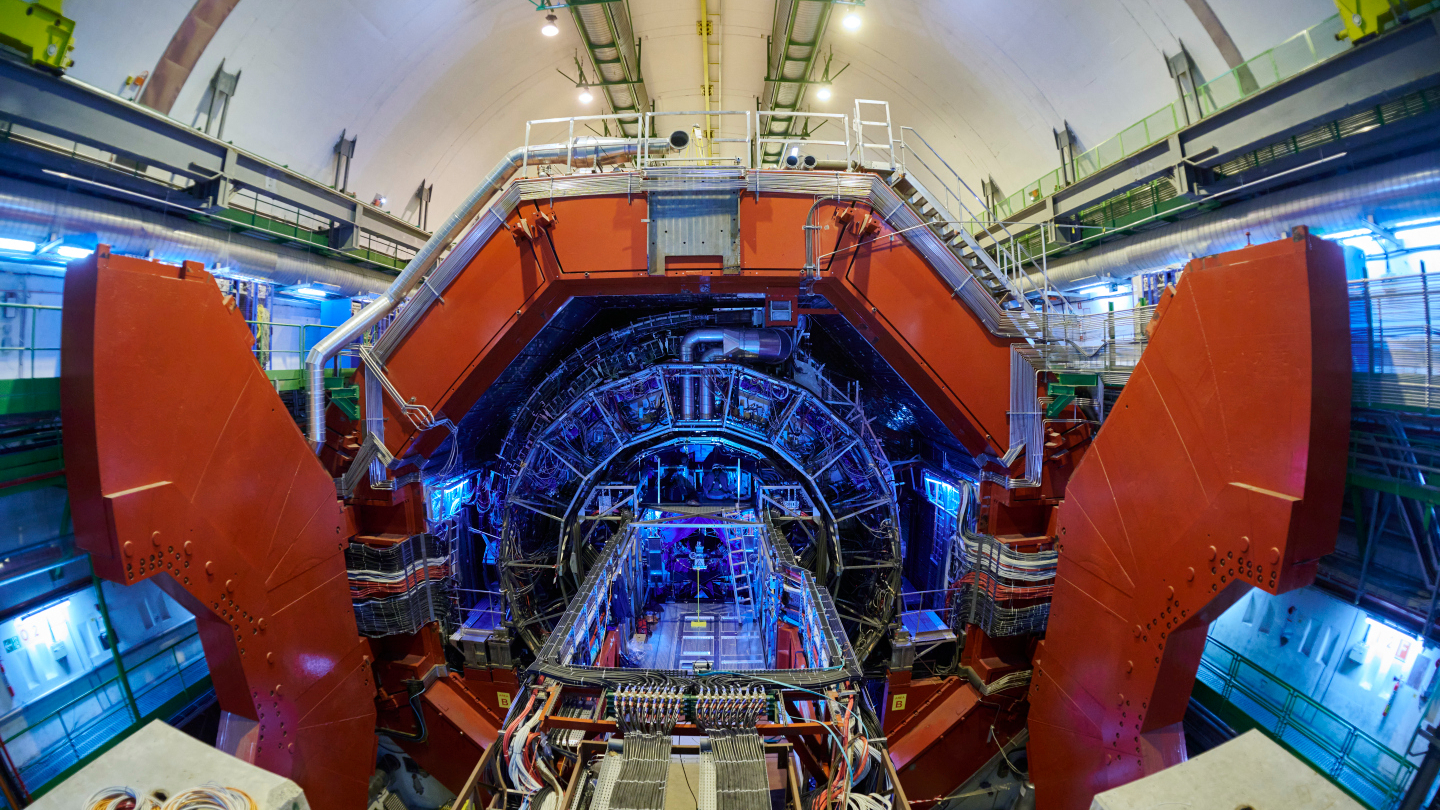Spitzer Telescope Warms Up to Its New Mission

Last month, NASA's Spitzer Space Telescope ran out of the cryogen that has kept its instruments cool and allowed them to peer through the universe at some of the coldest objects in space for the last 5.5 years.
Far from ending the mission though, the milestone marked the beginning of an entirely new phase for the spacecraft, one that promises to be every bit as fruitful as Spitzer's initial run.
"It's valuable and it's unique and it's exciting," said project scientist Michael Werner of NASA's Jet Propulsion Laboratory in Pasadena, Calif.
The Warm Spitzer mission will consist of 10 large-scaled "Exploration Science" projects, as well as dozens of smaller efforts. These projects will look at everything from Near Earth Objects (asteroids and comets that orbit the sun near Earth's path) to extrasolar planets to massive galaxies in the early universe.
"There's quite a variety of them," Werner said.
Mission managers are still checking out Spitzer's infrared array camera to make sure it is working properly at the telescope's new warmer temperature, so it will be about a month until data for the new projects begins coming in, but effectively "the mission is underway," Werner said.
Cold vs. warm
Get the Space.com Newsletter
Breaking space news, the latest updates on rocket launches, skywatching events and more!
During its cryogenic mission, Spitzer's infrared eye detected a whole range of wavelengths, from the very short to the very long (about 3 microns to 160 microns). With the loss of its liquid helium coolant, those longer wavelengths get lopped off, but Warm Spitzer will still have excellent vision at shorter wavelengths.
(And as Werner points out, "cold is a relative term." Warm Spitzer is still only at -400 degrees Fahrenheit (-240 Celsius) -- "that's still really cold," he said.)
Being limited to shorter wavelengths doesn't entirely limit the science Spitzer can do, because "it turns out it depends on what you want to look at," Werner told SPACE.com. There's still plenty of science that is ideally done at these wavelengths.
And the less frenzied pace of the Warm Mission will actually allow scientists to do projects that wouldn't have fit into the original mission's schedule.
One such project will examine the variability of so-called young stellar objects. "These are objects where they're in the process of forming planetary systems, they're surrounded by a disk of material, the disk is interacting with the star in various ways," Werner explained. "It's a kind of a messy situation."
Young stellar objects are known to vary on timescales of days to weeks, so Warm Spitzer will observe some continuously for several weeks. "In the cryogenic mission, that would not have been possible because we were switching instruments on timescales of one to two weeks," Werner said.
Warm Spitzer will also devote 2,000 hours to a single deep survey project looking into the early universe. "That's about twice as big as any program that we had in the cryogenic mission just because of the pressure of the various competing scientific interests," Werner said.
The new phase will also include projects that "we really didn't know we could do during the cryogenic mission," particularly observations of exoplanets, Werner said.
Neighborhood watch
One such project whose potential wasn't realized until late in the game of the original mission is the observation of Near Earth Objects (NEOs), the asteroids and comet remnants that are in our region of the solar system and, in some cases, could one day pose a threat to Earth.
So one of the 10 large Warm Spitzer projects will observe a group of about 700 NEOs to learn more about their sizes and makeup.
"At the very short wavelengths where Warm Spitzer works is a unique niche to be able to measure the solar flux of something in the solar system," said principal investigator of the project David Trilling of Northern Arizona University. "It only works because the NEOs are very warm compared to other things in the solar system."
While objects in the outer regions of the solar system have colder temperatures, "the NEOs have temperatures like the Earth, basically, because they're in orbits similar to the Earth's orbit."
About 5,000 NEOs have been identified, along with their orbits in most cases. This information is all that is needed to determine if any individual object is at risk of colliding with the Earth. But, "we know almost nothing about any individual object," Trilling told SPACE.com.
The Warm Spitzer survey will observe the selected NEOs to determine the proportions of large and small rocks and other characteristics about the unusual objects.
"That's the main thrust of our study -- we want to study the global properties of this population that we know almost nothing about despite the fact that they are the closest thing to Earth in the solar system," Trilling said.
Knowing the size distribution of the NEOs sheds light on just how they got to be where they are, far from the Oort cloud or the main asteroid belt between Mars and Jupiter.
"Where did these objects come from? What has happened to them since they came to the NEO region? Have they collided with each other, have they collided with planets? Have they split into parts?" Trilling said.
Most are likely asteroids that were displaced by some dynamical interaction and migrated closer to the Earth. Others are likely dead comets that got stuck in the inner solar system after their orbits brought them close to the sun and the material that makes up their tails was burned off.
While they look like rocks from the outside, dead comets could contain water and organic materials. Some scientists think that Earth's own life and water were seeded by comet impacts, so the dead comets in the NEO population "may have had a very significant impact, no pun intended, on the early Earth," Trilling said.
The Spitzer survey will examine the reflectivity of NEOs to distinguish asteroids from dead comets (the different compositions of objects affect how they reflect light).
The survey will also look at binary NEOs and will estimate the combined densities of these very common pairings, which will also shed light on the composition and origin of the objects.
"It's a pretty neat opportunity," Trilling said of the project.
'All over the map'
Among the other large projects planned for the Warm Spitzer mission are four that will look at exoplanets.
Two will look at already discovered planets, while the other two will be looking for their own discoveries, including searching for so-called "super Earths."
Of the two looking at known exoplanets, one will be confirming discoveries by the Kepler mission, now in orbit and operational, and learning more about them by determining whether they are gaseous or rocky, the structure of their atmospheres and other characteristics.
The other will conduct an orbital study of exoplanets, "where you look at the exoplanet over its entire orbit around the star," Werner said. "That allows you to look at the distribution of temperature on the surface of the exoplanet."
Another project will complete an earlier Spitzer survey of the galactic plane, learning about the distribution of stars in the Milky Way, their masses, ages, and how far out do spiral arms extend, telling us "more and more about our home base, so to speak," Werner said.
Another survey will do the same characterization of stars in other galaxies, while others peer at galaxies in the early universe.
"We're looking to a time when the universe was essentially 10 percent of its current size and age -- pretty far back," Werner said.
"One of the most interesting ones is to measure the Hubble constant, which is the rate at which the universe is expanding locally," Werner said.
Spitzer will try to help constrain the value of the Hubble constant by observing Cepheid variable stars, which feature a "relationship between the period of its variation and its brightness," Werner explained. If their brightness is known, their distance can be calculated, telling us just how fast the universe is expanding around us.
Of the many small projects that will also be conducted, many will also be looking at exoplanets, while others will observe brown dwarfs, supernovas, and minor planets, among other targets.
"They're sort of all over the map," Werner said.
Spitzer's sunset
All of these varied projects will be conducted over the next two years, the current planned time period for the Warm Spitzer mission.
Mission managers are already considering applying for a roughly 2.5-year extension, which would take the warm mission to 2014.
But that will be the end for Spitzer.
"Spitzer is moving away from the Earth, and around the end of 2013, it gets so far away that it would be difficult if we had a saving event to recover the data to properly diagnose the problems," Werner said. "So we're kind of considering that as a reasonable sunset clause for the warm mission."
Spitzer won't crash into the sun or move out of its orbit, "it will just continue to orbit the sun for eternity," Werner said.
Join our Space Forums to keep talking space on the latest missions, night sky and more! And if you have a news tip, correction or comment, let us know at: community@space.com.

Andrea Thompson is an associate editor at Scientific American, where she covers sustainability, energy and the environment. Prior to that, she was a senior writer covering climate science at Climate Central and a reporter and editor at Live Science, where she primarily covered Earth science and the environment. She holds a graduate degree in science health and environmental reporting from New York University, as well as a bachelor of science and and masters of science in atmospheric chemistry from the Georgia Institute of Technology.
